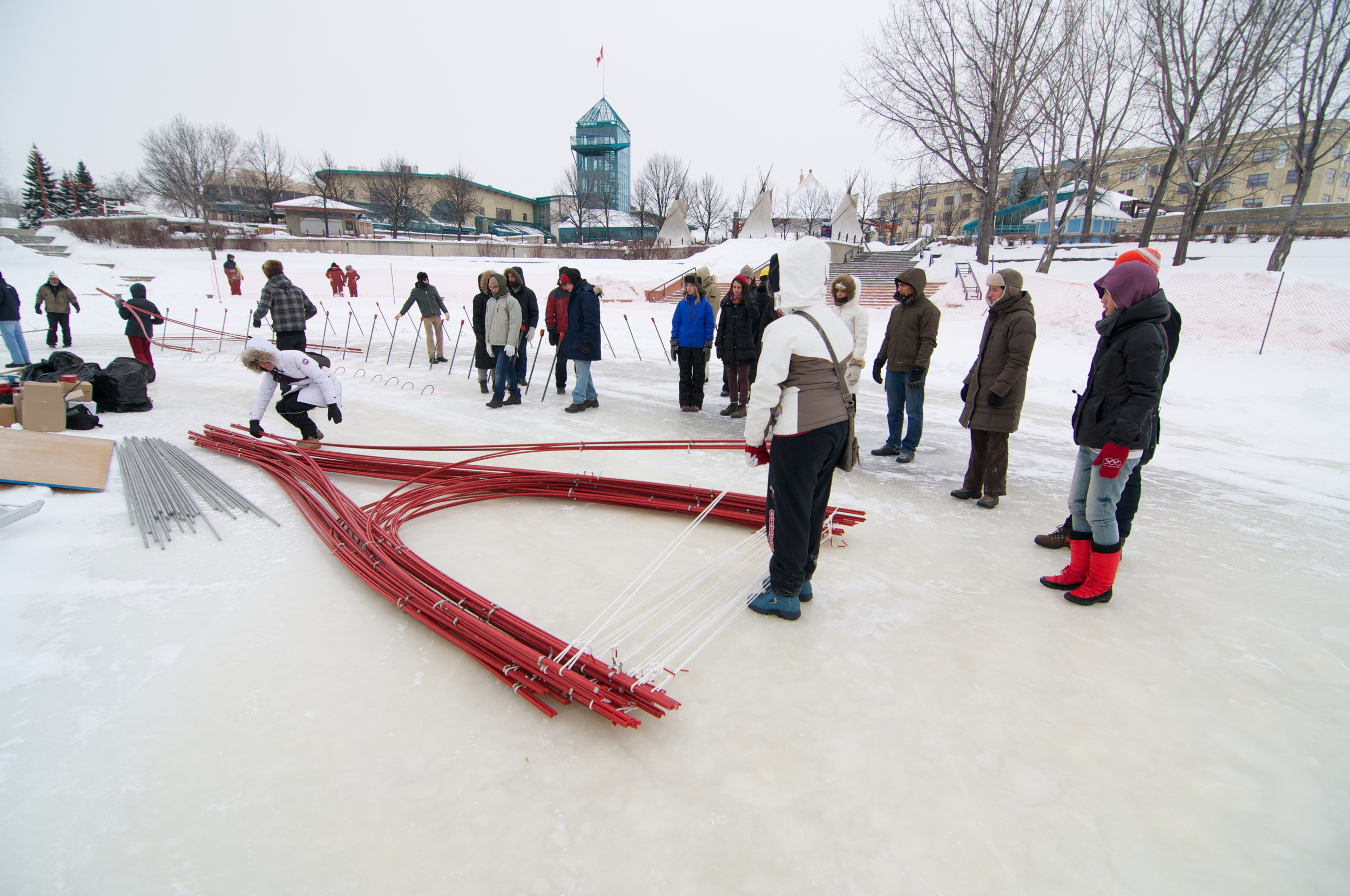Cocoon
Cocoon
Winnipeg, Manitoba (2011)
Each year the frozen Red and Assiniboine Rivers in Winnipeg are host to the longest natural river trail in the world (8km). And on this trail, there is an international competition for the production of “Warming Huts” for the visiting ice skating tourists to engage with. In 2011 I led the first invited entry for the University of Manitoba for this project.
Focusing on the opportunities of the extreme climate, I sought to test the ability of my previous research of fiberglass to act a skeletal form work for a structural skin made from ice. Because the loads generated by the ice and wind of the site were significant, I collaborated with the department of Civil Engineering, to test the ultimate strength of the material in the design geometries I was proposing, and Z3rch Structural Engineers (Berlin) who modeled the behavior of the structure using a high-dynamic range modeling software.
The frames were pre-assembled in modules and erected on site. After the skeleton was rigidized through fixed connections, the fabric skin was applied, and its form was found through the influence of gravity and curated points of connection. Finally a hole was drilled into the ice and the river water was sprayed onto the fabric in layers, freezing to a thickness of 5mm. The ice became strong enough to support its own weight, and to influence the form of the fiberglass at the same time. The project was a study of combining self-forming properties in pure bending and pure compression in a free-standing structure.
Project Partners: The Faculty of Architecture , the Partners Program, the Department of Civil Engineering - University of Manitoba; Smith Carter, Z3rch Engineers, Pultral, Itty Bitty Baby, Marshalls Fabrics, Mathieu Leger, the many volunteers from the Faculty of Architecture.































